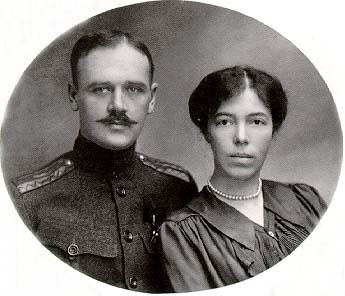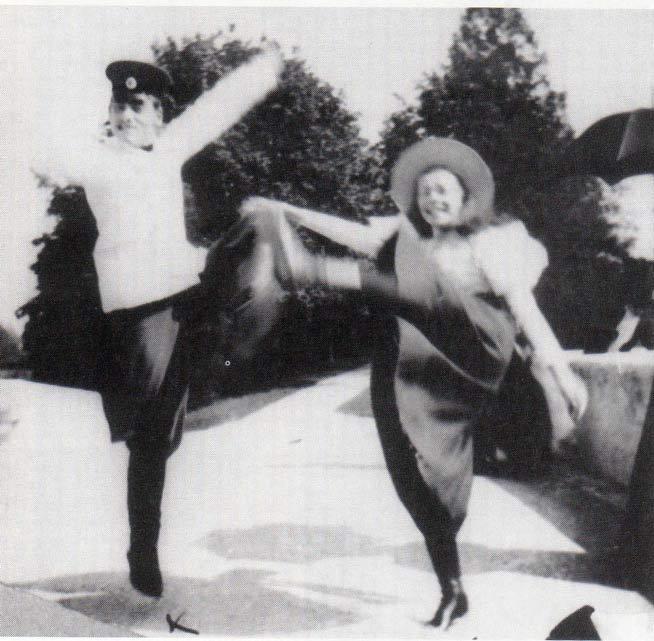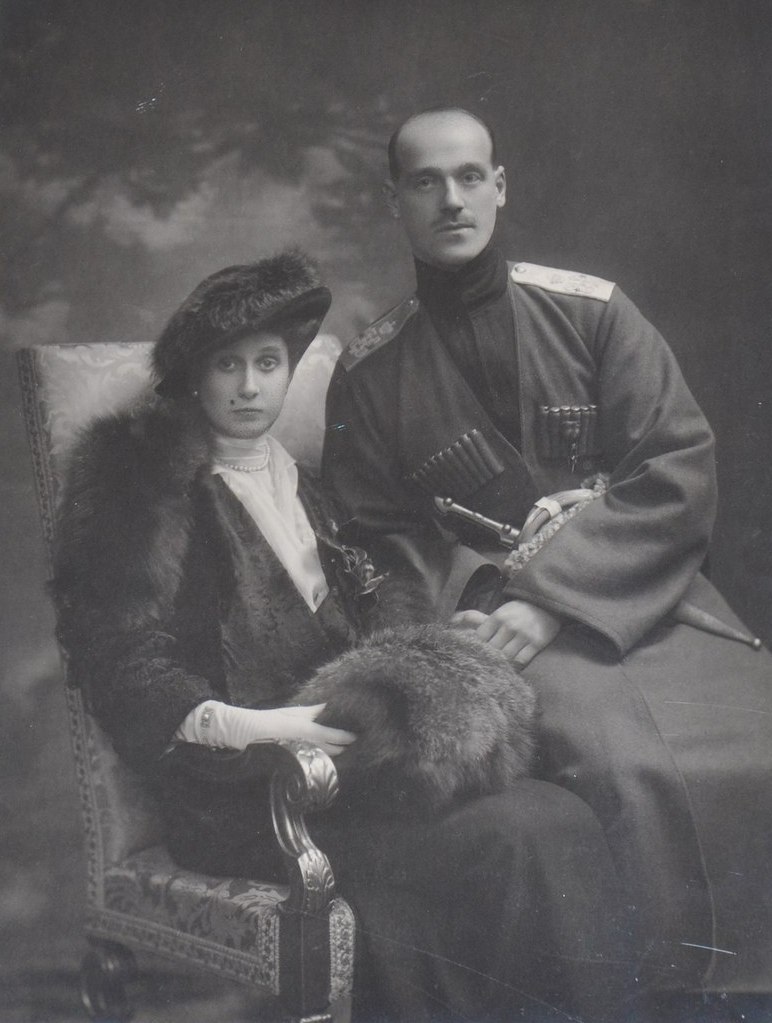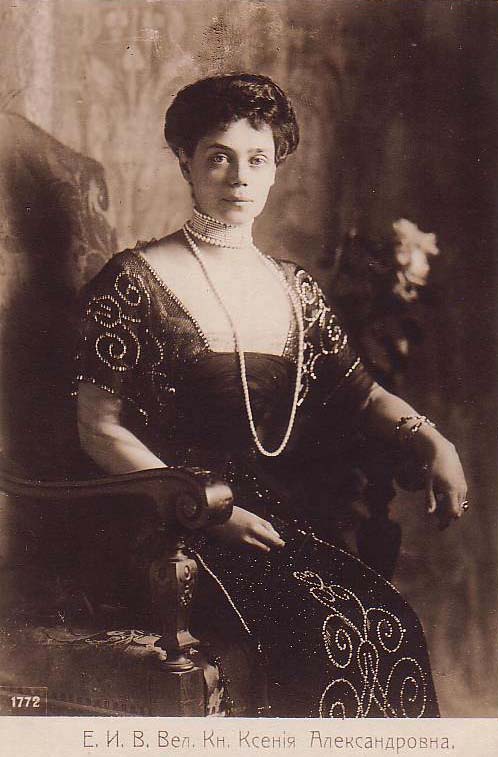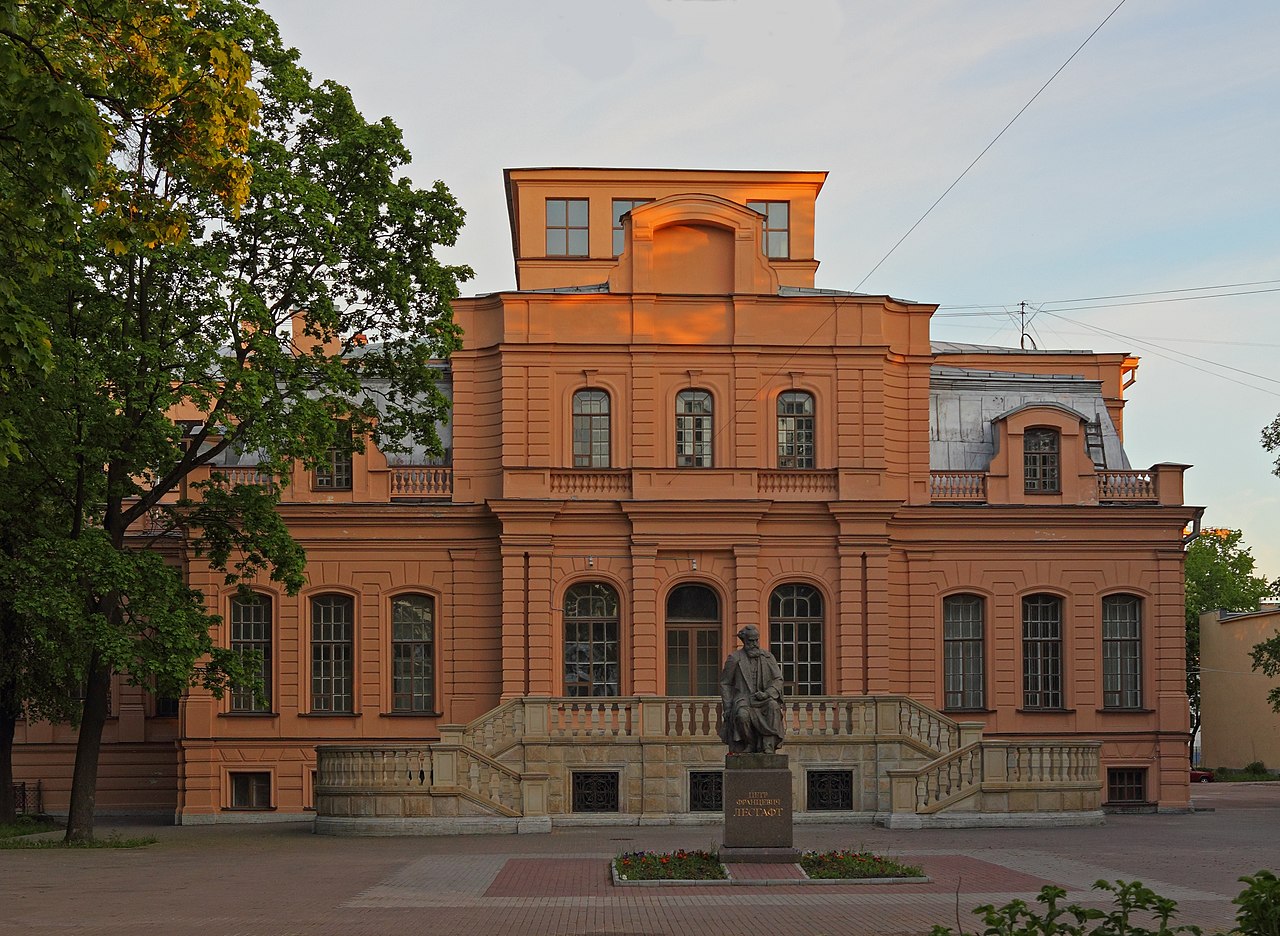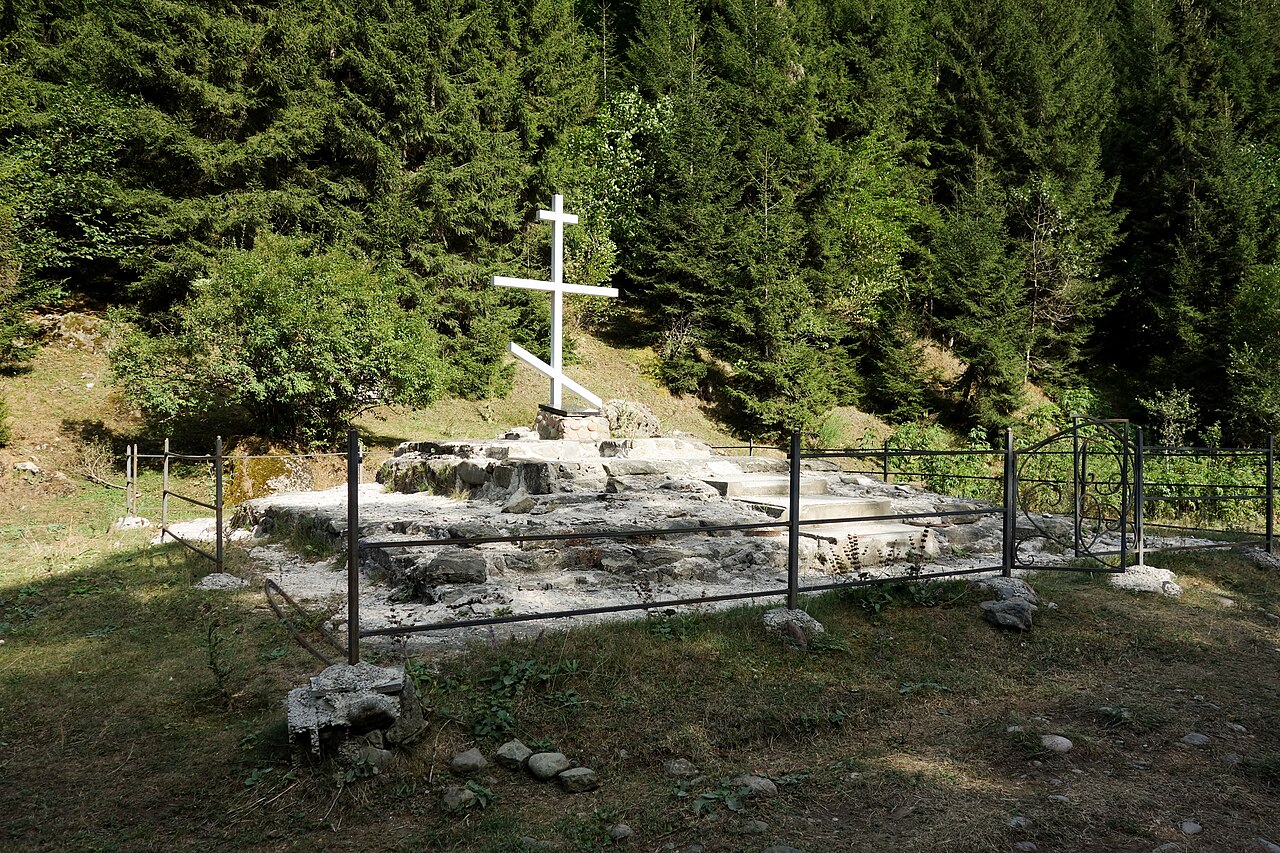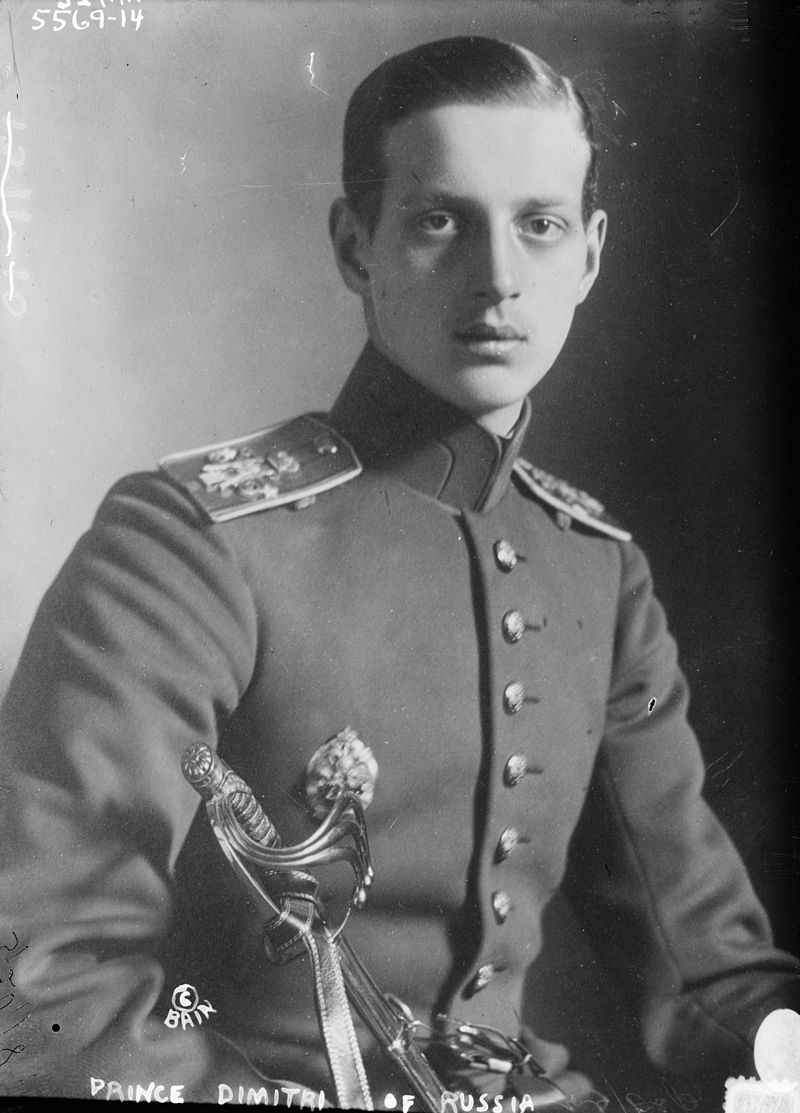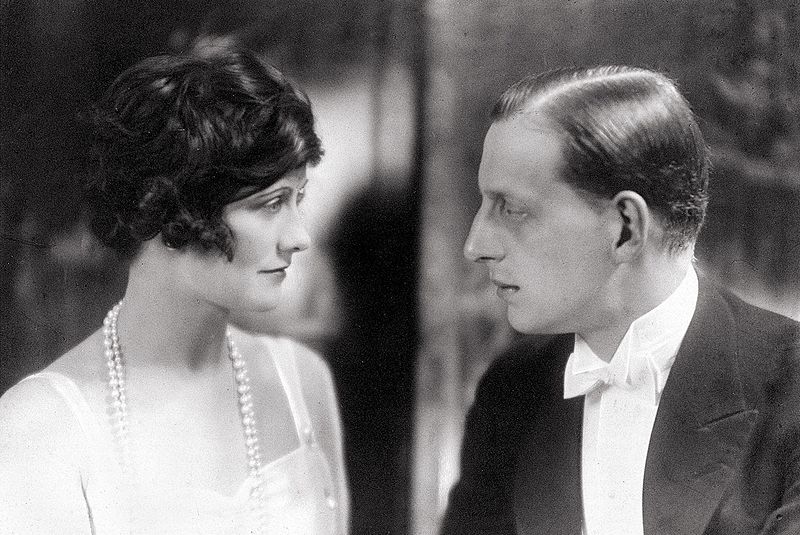by Susan Flantzer © Unofficial Royalty 2018

Grand Duke Paul Alexandrovich of Russia; Credit – Wikipedia
Grand Duke Paul Alexandrovich of Russia was one of the four Grand Dukes executed by a firing squad at the Peter and Paul Fortress on January 28, 1919. His son from his first marriage, Grand Duke Dmitri Pavlovich, was one of the conspirators involved in the murder of Grigori Rasputin. Paul’s son from his second morganatic marriage, Prince Vladimir Pavlovich Paley, was one of the five Romanovs executed on July 18, 1918, with Grand Duchess Elizabeth Feodorovna.
Grand Duke Paul was born at the Catherine Palace at Tsarskoye Selo near St. Petersburg on October 3, 1860. He was the eighth of the eight children and the sixth of the six sons of Alexander II, Emperor of All Russia and Marie of Hesse and by Rhine (Empress Maria Alexandrovna) and the paternal uncle of Nicholas II, Emperor of All Russia. Paul was only eight years older than his nephew Nicholas and the two had a close relationship.
Paul had seven siblings including Alexander III, Emperor of All Russia:
- Grand Duchess Alexandra Alexandrovna (1842 – 1849), died of meningitis at the age of six
- Tsarevich Nicholas Alexandrovich (1843 – 1865), engaged to Dagmar of Denmark (the future wife of his brother Alexander III), died of meningitis at the age of 21
- Alexander III, Emperor of All Russia (1845 – 1894), married Dagmar of Denmark (Maria Feodorovna), had issue
- Grand Duke Vladimir Alexandrovich (1847 – 1909), married Marie of Mecklenburg-Schwerin (Maria Pavlovna), had issue
- Grand Duke Alexei Alexandrovich (1850 – 1908), had illegitimate issue via an affair with Alexandra Vasilievna Zhukovskaya
- Grand Duchess Maria Alexandrovna (1853 – 1920) married, Alfred, Duke of Edinburgh and Saxe-Coburg and Gotha, had issue
- Grand Duke Sergei Alexandrovich (1857 – 1905), married, Elisabeth of Hesse of Hesse and by Rhine (Elizabeth Feodorovna), no issue

Seated: Emperor Alexander II with his daughter-in-law Maria Feodorovna and his grandson Nicholas Alexandrovich (future Nicholas II). In the back row. Grand Duke Paul Alexandrovich, Grand Duke Sergei Alexandrovich, Grand Duchess Maria Alexandrovna, Grand Duke Alexei Alexandrovich, Tsarevich Alexander Alexandrovich (future Alexander III) and Grand Duke Vladimir Alexandrovich.
Paul was educated with his brother Grand Duke Sergei Alexandrovich who was assassinated in 1905 when a bomb was thrown into his carriage. In 1881, Paul’s father Alexander II had also been assassinated in the same way. Paul served in the Russian Army as a general in the Cavalry and an adjutant general to his brother Alexander III, Emperor of All Russia.
Paul and Sergei maintained their closeness even after Sergei’s marriage to Princess Elisabeth of Hesse and by Rhine (Grand Duchess Elizabeth Feodorovna) in 1884. Paul accompanied the couple to England to visit Elizabeth’s grandmother Queen Victoria and lived for some time with his brother and his sister-in-law, who also became very close to him.

Paul and Sergei; Photo Credit – Wikipedia
Paul’s health was delicate as a child and as an adult, he suffered from a lung ailment (perhaps asthma) and spent time in warmer climates to recuperate. On medical advice, Paul spent the first of several winters in Greece in 1887. Paul’s first cousin was Queen Olga of Greece, wife of King George I of Greece. Queen Olga had been born Grand Duchess Olga Konstantinova, daughter of Grand Duke Konstantin Nikolayevich of Russia, the second son of Nicholas I, Emperor of All Russia. King George I had been born Prince Vilhelm of Denmark, son of King Christian IX of Denmark. He was the brother of Paul’s sister-in-law Empress Maria Feodorovna, born Princess Dagmar of Denmark. The Greek royal family also frequently visited with the Romanov family on visits to Russia or Denmark. With all the family connections, Paul felt quite comfortable with the Greek royal family and it was no surprise that he grew closer and fell in love with the eldest daughter Princess Alexandra.

Princess Alexandra and Grand Duke Paul Alexandrovich in 1888; Credit – Wikipedia
Paul and Alexandra’s engagement was announced on November 10, 1888, and the couple was married in the Grand Church at the Winter Palace in St. Petersburg, Russia on June 17, 1889. Alexandra took the name Alexandra Georgievna. The couple had two children:
The newlyweds lived in a palace in St. Petersburg on the English Embankment and were given rooms at the Catherine Palace at Tsarskoye Selo. Paul and Alexandra’s marriage was a happy one but sadly, it was to be a short marriage. In the summer of 1891, Paul and Alexandra decided to spend some time at Ilinskoe, Sergei and Elizabeth’s country estate outside Moscow.

Paul’s palace on the English Embankment in St. Petersburg; Credit – Wikipedia
While there, Alexandra, seven months pregnant with her second child, took a walk with her friends on the bank of the Moskva River and jumped directly into a boat that was permanently moored there and fell. The next day, she collapsed from violent labor pains in the middle of a ball. Alexandra gave birth prematurely to a son, Grand Duke Dmitri Pavlovich, and then she lapsed into a coma. Alexandra did not recover consciousness and died six days later on September 24, 1891, at the age of 21. Her parents arrived from Greece shortly before her death. In all the commotion, the premature Dmitri was nearly forgotten and was found in a heap of blankets. He was not expected to live.
It seems that the fall in the boat was not the actual cause of the premature labor. An autopsy showed that Alexandra’s premature labor was caused by eclampsia, a condition that causes a pregnant woman, usually previously diagnosed with preeclampsia (high blood pressure and protein in the urine), to develop seizures or coma. Nephritis, a kidney disorder, and heart damage were also detected.
Alexandra was initially interred in the Peter and Paul Cathedral in St. Petersburg. At her funeral, Paul could not bear to have the coffin closed and his brother Sergei had to take him in his arms and lead him away. For some time, his brother Sergei and his wife Elizabeth took care of little Maria and Dmitri. Paul never returned to his St. Petersburg palace and mostly lived at Tsarskoye Selo. In 1939, Alexandra’s remains were brought to Greece and reinterred at the traditional burial site of the Greek royal family, the Royal Cemetery on the grounds of Tatoi Palace. Paul was grief-stricken and depressed.

Sergei Alexandrovich, Elizabeth Feodorovna. Maria Pavlovna, and Dmitri Pavlovich sitting on the lap of his father Paul Alexandrovich; Credit – Wikipedia
In 1895, Paul began an affair with a married woman Olga Valerianovna Karnovich. Olga gave birth in 1896 to a son who was then known as Vladimir von Pistohlkors because his mother was still married to Major General Erich Gerhard von Pistohlkors, an aide to Paul’s brother Grand Duke Vladimir. After Olga divorced her husband, Paul asked for permission to marry Olga from his nephew Nicholas II, Emperor of All Russia but Nicholas refused. Paul made a morganatic marriage to Olga on October 10, 1902, in a Greek Orthodox church in Livorno, Italy. Because he married without Nicholas II’s permission, Paul was banished from Russia, dismissed from his military commissions, and all his property was seized. His brother Grand Duke Sergei was appointed the guardian of Maria and Dmitri. The couple settled in Boulogne-sur-Seine, France near Paris.
Paul and Olga had three children:
- Prince Vladimir Pavlovich Paley (1897–1918), one of the five Romanovs executed on July 18, 1918, with Grand Duchess Elizabeth Feodorovna
- Princess Irina Pavlovna Paley (1903–1990), married (1) Prince Feodor Alexandrovich of Russia, had one son, divorced (2) Count Hubert Conquere de Monbrison, had one daughter
- Princess Natalia Pavlovna Paley (1905–1981), married (1) Lucien Lelong, a French fashion designer, no children (2) John Chapman Wilson, an American theatre director and producer, no children
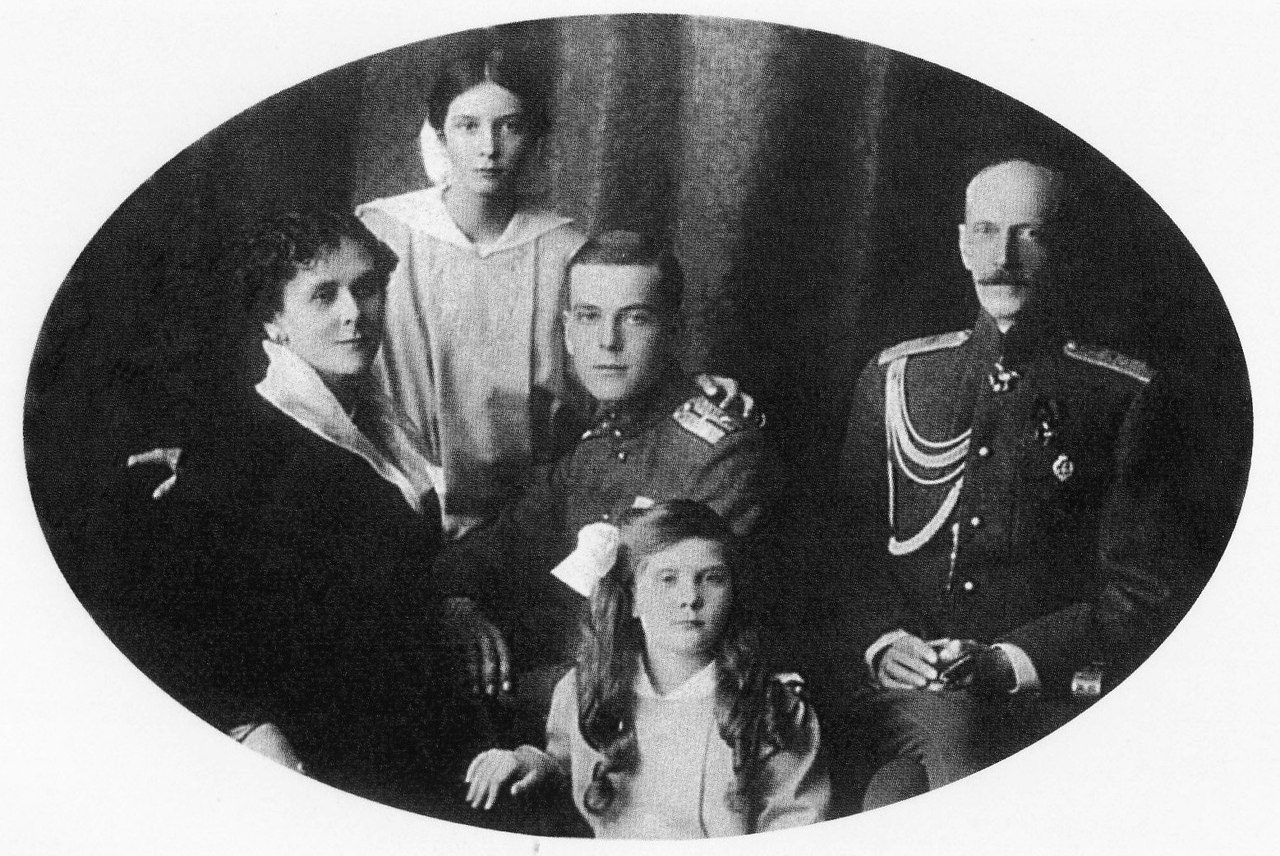
Paul and his family in 1916; Photo Credit – Wikipedia
In 1904, Grand Duke Paul arranged with Luitpold, Prince Regent of Bavaria for Olga and their children to be granted the hereditary title of Count and Countesses de Hohenfelsen. Paul was allowed to return to Russia for the funeral of his brother Grand Duke Sergei who was assassinated by a bomb in 1905. At that time, he tried to regain custody of his children Grand Duke Dmitri and Grand Duchess Maria but Nicholas II made Sergei’s widow Elizabeth Feodorovna the children’s guardian. Nicholas II allowed Paul to visit his children in Russia but not to live there permanently.
Paul, Olga, and their three children continued to live in their mansion near Paris. In 1908, Paul’s daughter Grand Duchess Maria Pavlovna married Prince Wilhelm of Sweden, Duke of Södermanland, the son of King Gustav V of Sweden. Although Paul was not consulted about the wedding, he was allowed to attend the wedding in Tsarskoye Selo. Later in the same year, Paul, Olga, and their three children visited Russia for the first time together. Eleven-year-old Vladimir was enrolled in the Corps des Pages, a military academy in St. Petersburg that other sons of Grand Dukes had attended.
In 1912, Nicholas II finally relented and decided to pardon his only surviving paternal uncle. Grand Duke Paul’s titles and properties were returned and Nicholas II recognized Paul’s marriage to Olga. Paul decided to continue living in France at that time. He returned to Russia again in 1913 for the 300th-anniversary celebration of the Romanov dynasty. At that time, Paul decided to move back to Russia and made plans for a house to be built at Tsarskoye Selo. Upon its completion in May 1914, Paul and his family moved back to Russia – a decision that would prove fatal to Paul and his son Vladimir.

Paul and Olga’s house at Tsarskoye Selo; Photo Credit – Wikipedia
Three months after Paul and his family moved back to Russia, World War I began. Paul received the command of the First Corps of the Imperial Guard, Dmitri and Vladimir fought with the Russian Army, and Maria Pavlovna became an army nurse. In 1915, Nicholas II gave Olga the title Princess Paley which would also be extended to her children. Paul’s command did not last long due to his ill health. He was transferred to the General Headquarters (Stavka) as Inspector General and Vladimir was transferred with him.

Paul (tall man in the front) with his son Vladimir (on left without a mustache) during World War I; Photo Credit – Wikipedia
In the fall of 1916, the Romanov family was increasingly worried about Grigori Rasputin’s influence on Nicholas II and his wife Alexandra Feodorovna. After working with many physicians to help her son Tsarevich Alexei relieve his hemophilia, Alexandra turned to mystics and faith-healers. This led to her close, and disastrous, relationship with Grigori Rasputin. Several times he appeared to have brought the Tsarevich back from the brink of death, which further cemented Alexandra’s reliance. To many historians and experts, this relationship would contribute greatly to the fall of the Russian monarchy.
Dowager Empress Maria Feodorovna and her son-in-law Grand Duke Alexander Mikhailovich knew Paul had a close relationship with his nephew Nicholas II and they asked him to persuade Nicholas and Alexandra to stop seeing Rasputin. Paul tried but he was unsuccessful. On December 30, 1916, Rasputin was murdered and Paul’s son Dmitri was one of the conspirators. Dmitri was exiled to Persia (Iran), a blessing in disguise as the exile possibly saved him from being killed during the upcoming Russian Revolution. For more information see Unofficial Royalty: Murder of Grigori Yefimovich Rasputin.
The February Revolution was the first of two revolutions in Russia that took place in 1917. Later in 1917, the October Revolution occurred, paving the way for the establishment of the Soviet Union. The February Revolution was caused by military defeats, economic issues, and scandals surrounding the monarchy. The immediate result of the February Revolution was the abdication of Nicholas II, the end of the Romanov dynasty, and the end of the Russian Empire. By March 12, 1917, all the remaining regiments of the Russian Imperial Army had mutinied. A Provisional Government was formed which issued a demand that Nicholas must abdicate.

Portraits of Emperors of Russia torn from the walls during the February Revolution in 1917; Credit – Wikipedia
On March 15, 1917, aboard the Imperial Train headed to Tsarskoye Selo, Nicholas signed the abdication manifesto. At first, he decided to abdicate in favor of his son Alexei, but he changed his mind after conferring with doctors who said the hemophiliac Alexei would not survive without his parents, who would surely be exiled. Nicholas then decided to abdicate in favor of his brother Grand Duke Michael Alexandrovich. However, Michael declined to accept the throne unless the people were allowed to vote for the continuation of the monarchy or for a republic. Grand Duke Paul was the one to tell Empress Alexandra Feodorovna that her husband had abdicated.
After the fall of the Russian empire, Paul and his family continued to live in their Tsarkoye Selo home. However, with the rise of the Bolsheviks in the October Revolution, the situation became much worse for the Romanovs. Paul could no longer afford to keep up his home and family moved to a nearby dacha (cottage) that belonged to his nephew Grand Duke Boris Vladimirovich.
The account of Grand Duke Paul’s execution below is from our article Unofficial Royalty: Execution of Four Russian Grand Dukes.
In March 1918, all male members of the Romanov family were ordered to register at Cheka headquarters and then they were sent into exile in internal areas of Russia. Paul’s son Prince Vladimir Paley was arrested in St. Petersburg on March 26, 1918, along with three sons of Grand Duke Konstantin Konstantinovich, a grandson of Nicholas I: Prince Ioann, Prince Konstantin, and Prince Igor. Paul and his family never saw Vladimir again. On July 18, 1918, the day after the execution of Nicholas II, Emperor of All Russia and his family, Prince Vladimir Paley, Prince Ioann, Prince Konstantin, Prince Igor, Grand Duke Sergei Mikhailovich, and Grand Duchess Elizabeth Feodorovna, the widow of Paul’s brother Sergei, were murdered by the Bolsheviks. See Unofficial Royalty: Execution of Grand Duchess Elizabeth Feodorovna and Five Other Romanovs for more information.
Grand Duke Paul Alexandrovich had avoided the exile order because he was too ill to travel. He remained in the dacha near Tsarskoye Selo. The Bolsheviks were determined to round up all the Grand Dukes still in Russia and so Paul was arrested on August 13, 1918. He joined Grand Duke Dmitri Konstantinovich, Grand Duke Nicholas Mikhailovich, and Grand Duke George Mikhailovich at Shpalernaia Prison in St. Petersburg. Each Grand Duke was held in a cell, only seven feet by three feet. Each day, they were all allowed to gather in the courtyard for exercise which allowed the Grand Dukes to exchange a few words. On December 6, 1918, Grand Duke Paul’s health, which was already bad, declined sharply, and he was transferred to a prison hospital.
The writer Maxim Gorky had been a supporter of Vladimir Lenin and the Bolsheviks but after seeing the terror of the new regime, he was changing his mind. Princess Paley, Grand Duke Paul’s wife, asked Gorky to intercede on behalf of the four Grand Dukes. In January 1919, Gorky went to Lenin to plead the case of the four Grand Dukes. Gorky pleaded the merits of each Grand Duke. When Gorky came to Grand Duke Nicholas Mikhailovich, he said, “Grand Duke Nicholas Mikhailovich is a historian.” Lenin replied, “The Revolution does not need historians.” Gorky did not give up and eventually, Lenin promised to release the four Grand Dukes. Gorky, with the release document signed by Lenin, rushed to the station in Moscow to catch the train to St. Petersburg. When he reached St. Petersburg, Gorky saw the headline in the newspaper, “Four Grand Dukes Shot” and he nearly fainted.
Unlike the execution of Nicholas II and his family and the execution of Elizabeth Feodorovna and the five other Romanovs, there are no written eyewitness accounts of the execution of the four Grand Dukes. What is known is based on versions of second-hand information.

Peter and Paul Fortress in St. Petersburg; The Peter and Paul Cathedral with its golden spire can be seen in the middle; Photo Credit – By Andrew Shiva / Wikipedia, https://commons.wikimedia.org/w/index.php?curid=51488758
On January 27, 1919, Grand Duke Paul was transferred from the prison hospital to another prison and was kept there until 10 pm, when he was driven to the Peter and Paul Fortress, originally built by Peter the Great to protect his new city of St. Petersburg and the site of the Peter and Paul Cathedral, the burial place of the Romanovs. At 11:30 pm on January 27, 1919, Grand Dukes Dmitri, Nicholas, and George were awakened in their cells at Shpalernaya Prison and were driven to the Peter and Paul Fortress. When Dmitri, Nicholas, and George arrived at the Fortress, they were roughly pushed from the truck into the Trubetskoy Bastion where prisoners arrested by the Bolsheviks were held. The Grand Dukes were told to remove their shirts and coats, despite the frigid temperature.

The Trubetskoy Bastion in the late 1920s; Photo Credit – Автор: Анонимный автор – http://encspb.ru/object/2804023013, Общественное достояние, https://commons.wikimedia.org/w/index.php?curid=26266039
Grand Duke Dmitri Konstantinovich, Grand Duke Nicholas Mikhailovich, and Grand Duke George Mikhailovich were escorted toward a ditch that had been dug in the courtyard. As they passed the Peter and Paul Cathedral where their ancestors were buried, they each made the sign of the cross. Guards appeared carrying Grand Duke Paul Alexandrovich on a stretcher. The three Grand Dukes were lined up before the ditch, in which there were already bodies. Nicholas Mikhailovich, who had been carrying his cat, handed it to a soldier, asking him to look after it. Grand Duke Paul was shot on his stretcher. Grand Dukes Nicholas, George, and Dmitry were all killed by the same blast, causing them to fall into the ditch.
Most likely, the ditch is the burial place of the four Grand Dukes. In 2004, in the Grand Ducal Mausoleum adjoining the Peter and Paul Cathedral, a commemorative plaque was placed with the names of four Grand Dukes shot nearby in the Peter and Paul Fortress. In 2009, during the construction of a road to a parking lot at the Peter and Paul Fortress, nine unmarked mass graves were discovered and a total of 112 remains were unearthed. Perhaps eventually the remains of the four Grand Dukes will be identified.
In 1981, Grand Duke Paul, Grand Duke Dmitri, and Grand Duke George were canonized as New-Martyrs of Russia by the Russian Orthodox Church Outside Russia. Grand Duke Nicholas was the only Romanov who had been executed by the Bolsheviks not to be canonized by the Russian Orthodox Church Outside of Russia.
This article is the intellectual property of Unofficial Royalty and is NOT TO BE COPIED, EDITED, OR POSTED IN ANY FORM ON ANOTHER WEBSITE under any circumstances. It is permissible to use a link that directs to Unofficial Royalty.
Works Cited
- Angelfire.com. (2018). ROYAL RUSSIA NEWS. THE ROMANOV DYNASTY & THEIR LEGACY, MONARCHY, HISTORY OF IMPERIAL & HOLY RUSSIA. [online] Available at: http://www.angelfire.com/pa/ImperialRussian/blog/index.blog/1450058/excavations-for-grand-dukes-remains-to-resume-at-peter-and-paul-fortress/ [Accessed 19 Feb. 2018].
- En.wikipedia.org. (2018). Grand Duke Paul Alexandrovich of Russia. [online] Available at: https://en.wikipedia.org/wiki/Grand_Duke_Paul_Alexandrovich_of_Russia [Accessed 19 Feb. 2018].
- Flantzer, S. (2018). Execution of Four Russian Grand Dukes. [online] Unofficial Royalty. Available at: https://www.unofficialroyalty.com/execution-of-four-grand-dukes/ [Accessed 27 Feb. 2018].
- Hall, Coryne. (2006). Little Mother of Russia – A Biography of Empress Marie Feodorovna. Teaneck, N.J.: Holmes & Meier.
- Perry, J. and Pleshakov, K. (2008). The flight of the Romanovs. New York: Basic Books.
- Ru.wikipedia.org. (2018). Расстрел великих князей в Петропавловской крепости. [online] Available at: https://ru.wikipedia.org/wiki/%D0%A0%D0%B0%D1%81%D1%81%D1%82%D1%80%D0%B5%D0%BB_%D0%B2%D0%B5%D0%BB%D0%B8%D0%BA%D0%B8%D1%85_%D0%BA%D0%BD%D1%8F%D0%B7%D0%B5%D0%B9_%D0%B2_%D0%9F%D0%B5%D1%82%D1%80%D0%BE%D0%BF%D0%B0%D0%B2%D0%BB%D0%BE%D0%B2%D1%81%D0%BA%D0%BE%D0%B9_%D0%BA%D1%80%D0%B5%D0%BF%D0%BE%D1%81%D1%82%D0%B8 [Accessed 19 Feb. 2018].
- Unofficial Royalty. (2018). 100 Years Ago: Nicholas II, Emperor of Russia Abdicates. [online] Available at: https://www.unofficialroyalty.com/100-years-ago-tsar-nicholas-ii-of-russia-abdicates/ [Accessed 26 Feb. 2018].





